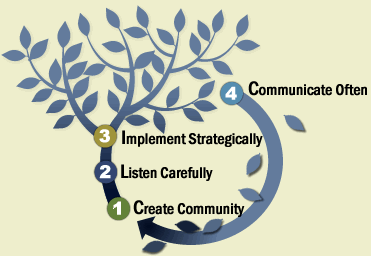and Wal-Mart: The Hight Cost of Low Price,
and though we known it before, it became even more clear what the mission of BigTreeTop.com is, and that is to do our part to prevent two things:
- The "Wal-Mart Effect" on small business (small businesses dying off as a result of large businesses moving into a community and exerting their pricing influence past where smaller businesses can compete), and
- Corporatization of America (consumers and employees becoming less aware and less involved in the organizations that shape our lives)

BigTreeTop's contribution to the solution is by starting with small and mid-sized businesses and organizations, to provide a platform that will help them to more easily adopt co-creative practices with their employees, customers, and business partners, by involving them in some decision making, story-telling, community and partnership-building and creation of value itself. We are sure it will have at least the following two effects on small business in local economies:
- It will help to stave off the Wal-Mart effect on SMB's and their local economies by improving the advantages they already have over large businesses trying to exert their influence: real community, adaptability and customer loyalty beyond just product and service value
- It will provide consumers with increased ownership of the success of their local businesses and economy
- Large organizations will be forced to involve employees and customers in deeper co-creation as a source of real competitive advantage.
- Deeper co-creative involvement of customers and employees in large organizations will lessen their ability to take part in unsustainable business practices.








